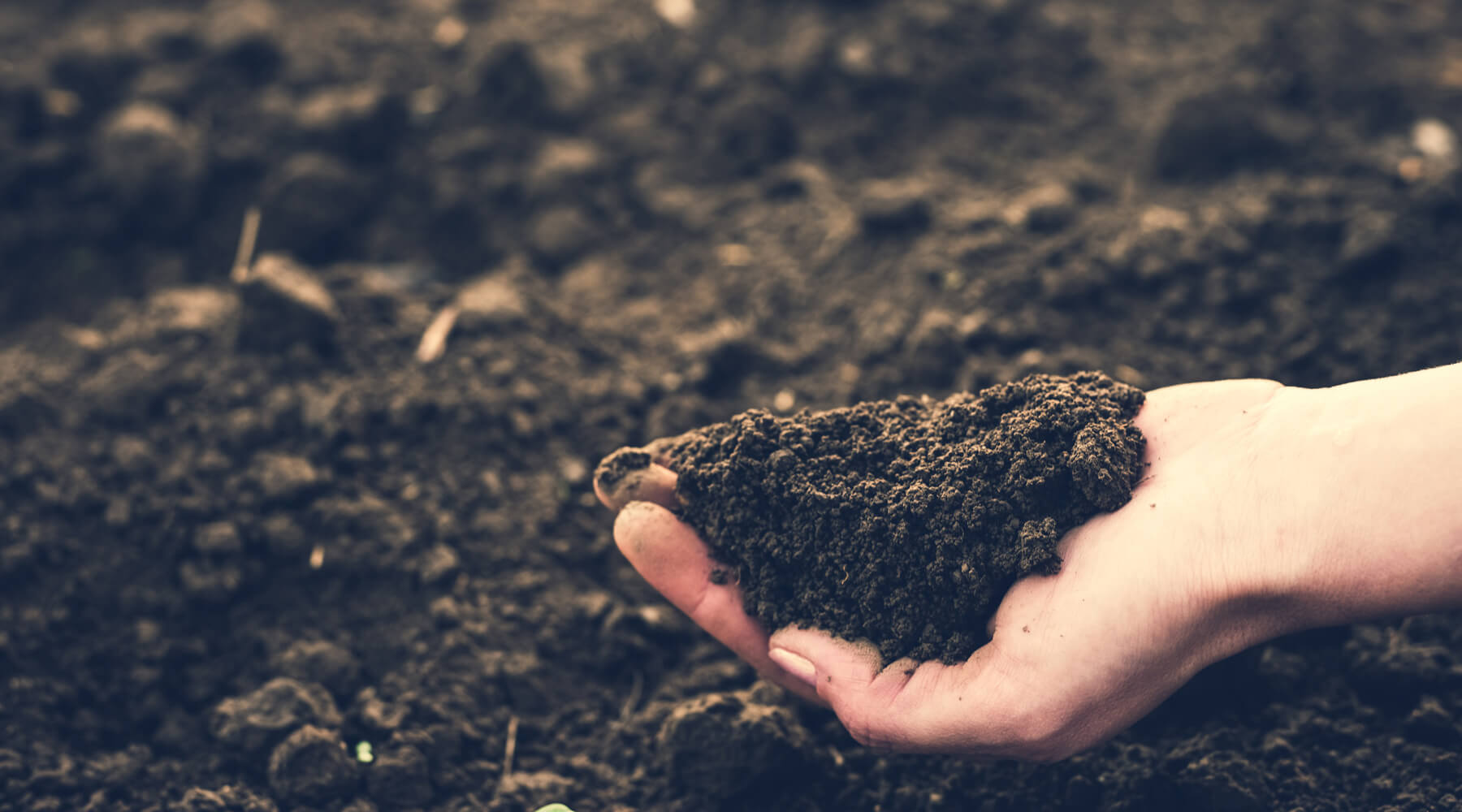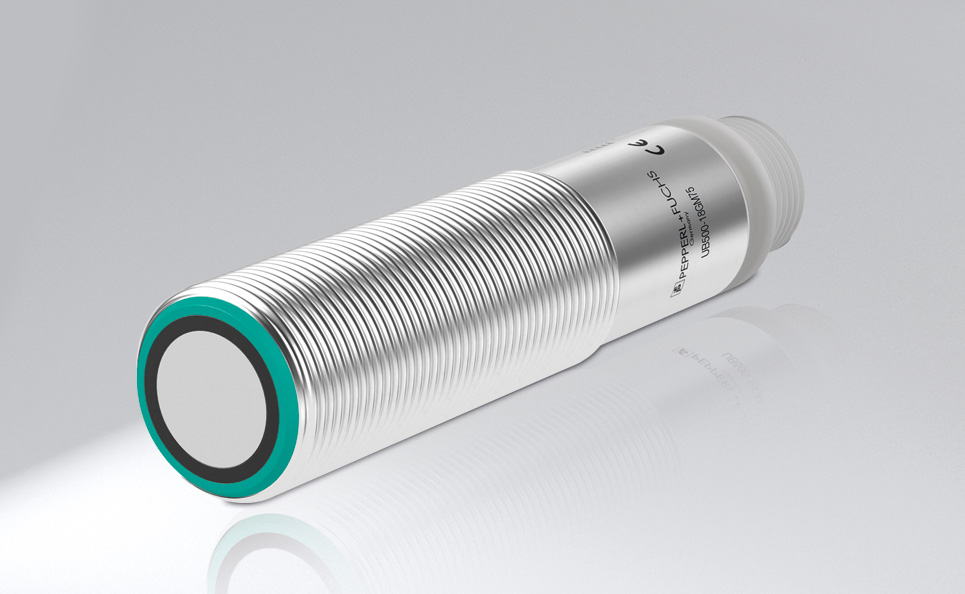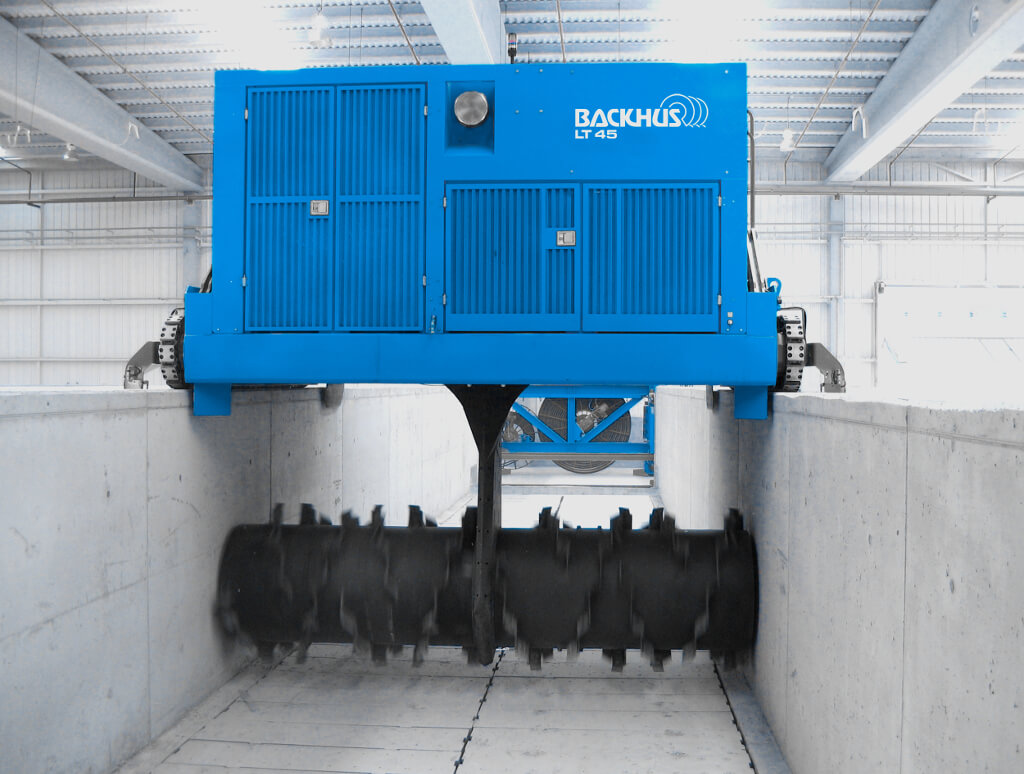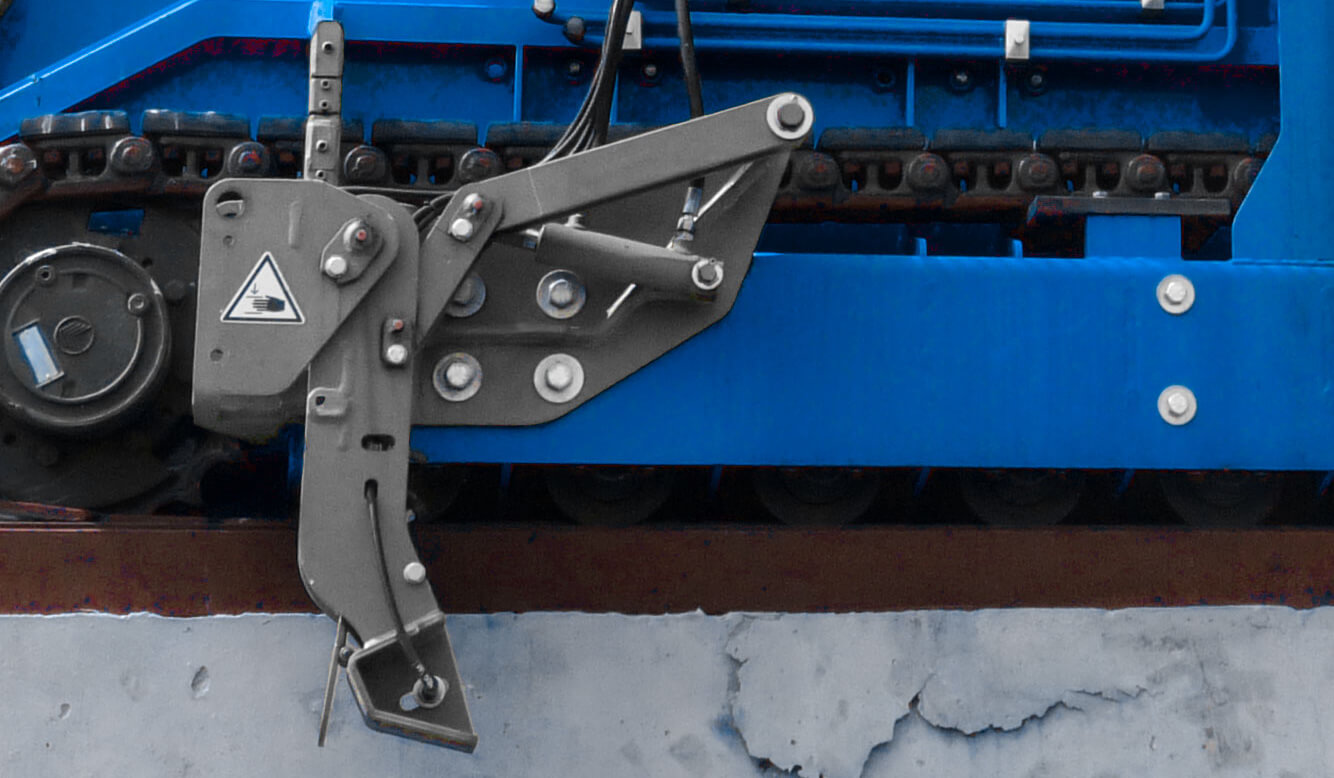January 8, 2018
Keeping Compost on Track
To keep its fully automated lane turner machines weighing several tons safely in the lane, the Eggersmann company relies on IO-Link-based ultrasonic sensor technology from Pepperl+Fuchs.

Sunshine heats up the air under the huge corrugated metal roof of the KDM GmbH composting plant in Düsseldorf. A damp and earthy smell immediately rises to your nose. Thousands of cubic meters of compost stretch out in one lane after another, separated by head-high concrete walls. And in the midst of this expansive environment, the BACKHUS Lane Turner from Eggersmann grabs your attention—not only due to the sonorous hum of its powerful six-cylinder engine, but also because of its deep-blue paint finish.
Jens Brinkmann, Head of Electrical Engineering at Eggersmann GmbH, closely follows the motion of the massive machine: 'It is a fulfilling moment for any engineer to see their own design being operated by a customer,' he says, letting a little bit of fine compost trickle through his fingers. 'For green waste, garden waste, and organic waste to be transformed into such high-quality, humus-rich compost, a whole range of automated process steps is necessary. We are well versed in this field at Eggersmann, and we let our knowledge and experience flow into the design of our products, including the BACKHUS turners.'
Just the Right Amount of Air and Water
The above-mentioned products from the BACKHUS Lane Turner range are a result of this work. Designed and built at the Eggersmann facility for turning technology in Wardenburg, Lower Saxony, the fully automated lane turners are now in use at KDM. These machines can be found all over the world, too—as demonstrated by the company´s export ratio of 90 %. Their task is clearly defined: The microbiological processes necessary for composting must take place within individual lanes ('silos') that store a mixture of organic waste material ('decomposing material'). The decisive condition for these processes is an appropriate ratio of oxygen supply and water content. The Lane Turner provides this by shifting the decomposing material with its powerful rotor and then irrigating the material with an integrated drum at the back of the machine.
Heavyweight in a Balancing Act
As the global market leader for turning technology, Eggersmann has a lot of expertise in control and drive technology. Brinkman explains how an important part of this expertise is the ability to select the right suppliers and partners. 'We rely on Pepperl+Fuchs when it comes to sensor technology,' he says, pointing to the Lane Turner that has just started working on the next silo: 'You can see how narrow the lane is for the machine.' In fact, the fully automated machine has surprisingly little space to move across the silo on its continuous track. Moving over the 20-cm-thick concrete walls without any guard rails, the giant Lane Turner appears to be walking on tightropes.
Ultrasonic Sensors Are the Safety Net
Pepperl+Fuchs ultrasonic sensors help pull off the balancing act. Four of these sensors are mounted on a metal device near the drive wheels of the continuous track. From here, these sensors continuously monitor the distance in relation to the concrete wall and send this information to the controller via an analog 4 to 20 mA standard signal. If the actual value differs from the desired value, the position of the vehicle is corrected via the control panel and the process can continue without interruption, meaning that the equipment and the composting process are always protected.
So why did Eggersmann choose Pepperl+Fuchs ultrasonic sensors? 'When assessing our application, it quickly became clear that ultrasound is the right solution since the ambient conditions in which our customers operate the machines are very challenging. A composting process always produces a certain amount of pollution, so there will be dust and moisture in the air. In addition, recycling plants, like the one here in Düsseldorf, are often covered but not completely enclosed. This design exposes sensor technology to considerable temperature fluctuations. However, the functional principle of ultrasound is ideally suited for such conditions,' says Brinkmann.
After consulting with Jens Peter Weidlich, Sales Engineer at Pepperl+Fuchs, the UB500-18GM75-I-V15 was eventually chosen. The analog output of this ultrasonic sensor is suitable for distance measurement, and the IP67 protection makes it resistant to dust and water ingress. Thanks to a wide temperature range of -25 °C to 70 °C and built-in temperature compensation, the sensor also performs reliably in outdoor areas.

The analog output of the ultrasonic sensor UB500-18GM75-I-V15 is suitable for distance measurement, and the IP67 protection makes it resistant to dust and water ingress.
Moving Forward
Despite the reliable functionality of the sensors previously in use, the designers at Eggersmann are taking a step toward the future. With this in mind, they have been testing a new Pepperl+Fuchs ultrasonic sensor. Brinkmann explains what motivated him and his colleagues not to stick to the tried-and-tested methods and why they are also willing to move away from familiar paths: 'In our position as market leader, we place particular emphasis on providing solutions that are technically advanced but as intuitive as possible. When Mr. Weidlich presented the new UC-F77 series to us, it got our attention right away. On the one hand, it was because of the positive experience we have had with Pepperl+Fuchs, and on the other, it was due to the high degree of innovation offered by the newer device.'
More User-Friendly Than Ever with IO-Link
When comparing the two sensors, the most obvious difference is the appearance. The new F77, designed for use here as a sidelooker model, is extremely compact in a cube-shaped housing and saves a considerable amount of space compared to the cylindrical design of the 18GM75. It also offers the ruggedness required for composting applications, which was also a feature of the sensor previously used by Eggersmann. But the greatest innovation lies in what it offers end-users: As the type code already suggests, the UC800-F77S-IU-IO ultrasonic sensor fully supports the IO-Link standard. As a result, it opens up a whole range of new features for users of the BACKHUS Lane Turner. For example, the F77 can be easily parameterized on a laptop with PACTware software, rather than only on the device itself, which offers clear added value in terms of usability. If a sensor needs to be replaced, it can be sent to the customer pre-parameterized.
For Brinkmann, these are the factors that ultimately separate the good solutions from the excellent: 'The customer saves time and effort, which is exactly what we are aiming for. Since we are a solution provider in the field of environmental sustainability, the customer can also always be certain that they have made a sustainable investment. Experienced partners like Pepperl+Fuchs help us fulfill this quality promise.'
Ultrasonic Sensor UC-F77 – Adaptable, Precise and Reliable
Inside its very compact housing, UC-F77 features versatile ultrasonic technology.
In addition to IO-Link communication, this series also offers automatic synchronization and high noise immunity for maximum reliability.



